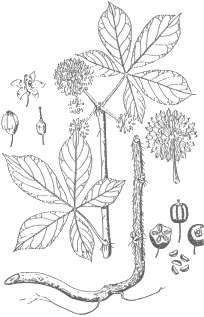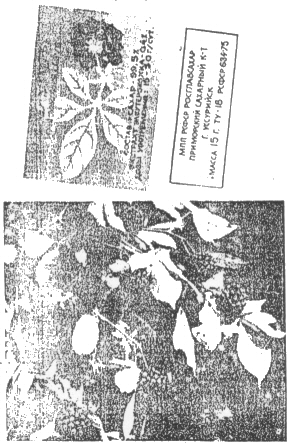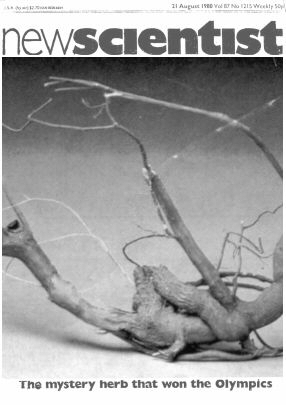
On the question of doping, Korobkov writes in a recent Soviet book: Medicinal Published in Moscow in 1974 that Eleutherococcus and similar substances have “nothing in common with doping, their action is primarily aimed at accelerating the restorative processes after intensive activity and at increasing the body's resistance to unfavorable external influence”. Eleutherococcus is taken widely throughout the Soviet Union for health purposes. Therefore if it came to a confrontation the Soviets would argue that as athletes use Eleutherococcus all the year round as part of a programme for their general fitness, it would be ridiculous to ban it just before the race. They would point to the definition agreed by the Council of Europe in which doping occurs only when a drug is taken with the sole object of increasing an athlete's performance. Yet this argument is still academic. Western experts do not believe in Eleutherococcus sufficiently to ban it and it would have been taken freely before this year's Olympics as at previous international events. Soviet officials do discourage the use of Eleutherococcus by their athletes in the midst of sports events to avoid the “evil eye” of other sportsmen, so it is usually taken for some time before the event. Research has anyway shown this to be the most effective way of taking it.

It is not only athletes that relish Eleutherococcus. The drug is put to some extraordinary uses for which Western doctors would assume drugs to be neither relevant nor effective. It is taken by Soviet deep-sea divers, mine and mountain rescuers, climbers, explorers, soldiers and factory workers to resist stress while working hard under inhospitable conditions. Lorry drivers and pilots take it to keep alert counteract the potentially dangerous side effects of other medication, Soviet cosmonauts also take it in space. Vladimir Lyakhov and Valery Ryumin took 4 ml of Eleutherococcus every morning of their record-breaking stay in the Salyut - 6/Soyuz 32 space station. Besides its use for the healthy who wish to stretch their powers to the limit, it is also given to those lower down on the health scale. It is prescribed in the USSR in anaemia depression, “asthenia”, any chronic and debilitating disease particularly if the heart and blood vessels, surgery, convalescence, chronic infections such as tuberculosis, and simply old age. It is not claimed to be curative, but restorative; that is to improve the general health, resistance and energy of those who are weak, debilitated and stressed. Its use for this purpose in hospitals and clinics is widespread in Russia. It is not a special idiosyncrasy of cosmopolitan city doctors.
What is their justification? Why do the Soviets consider Eleutherococcus so valuable that they boost bottles of it into space, and make sufficient extract to give 12 million citizens a month-long course every year?
Eleutherococcus was discovered as a result of a screening programmed of far eastern araliaceous plants. Unlike its more famous relative the ginseng root, Eleutherococcus has never been used in traditional medicine. The standard screening test was, and still is a mouse stamina test in which mice are forced to exercise until exhaustion. Eleutherococcus could prolong the swimming time by up to 44 per cent and a similar increase was found in trials with a moving rope upon which mice are compelled to run by electric shocks. The effect was dependent on dose and period of administration. Subsequently Eleutherococcus was tested in man under strenuous but less extreme conditions, such as the bicycle ergonometer to measure physical performance, and coding, radiotelegraphy and other tests to measure psychophysical performance. Eleutherococcus apparently aided human stamina, motivation, coordination and concentration.

Eleutherocccus in commercial form: "why do the Soviets consiglur it so valuable that they boost bottles of it into space, and make sufficient to give 12 million citizens a mouth long course every year?"
These studies were similar to those carried out previously in the USSR on ginseng, which led directly to ginseng's astonishing world revival. But Eleutherococcus is not ginseng although it has some similar effects. When it was sent to the chemist Professor G. B. Elyakov and his collaborators at Moscow State University for analysis were glycosides, meaning that the specific molecules were linked to sugar molecules. The main active principles of ginseng are glycosides containing triterpenoid groups, which are analogues of steroids. The Eleutherococcus glycosides on the other hand are phenolic or coumarinic, and it is claimed, were even less toxic than ginseng. Russian data reports an LD50 (lethal dose) of 4.7 g/kg of Eleutherococcus glycosides and 1.4 g/kg for those of ginseng (which is equivalent to the human consumption of about 2 kg of whole root at one sitting).
